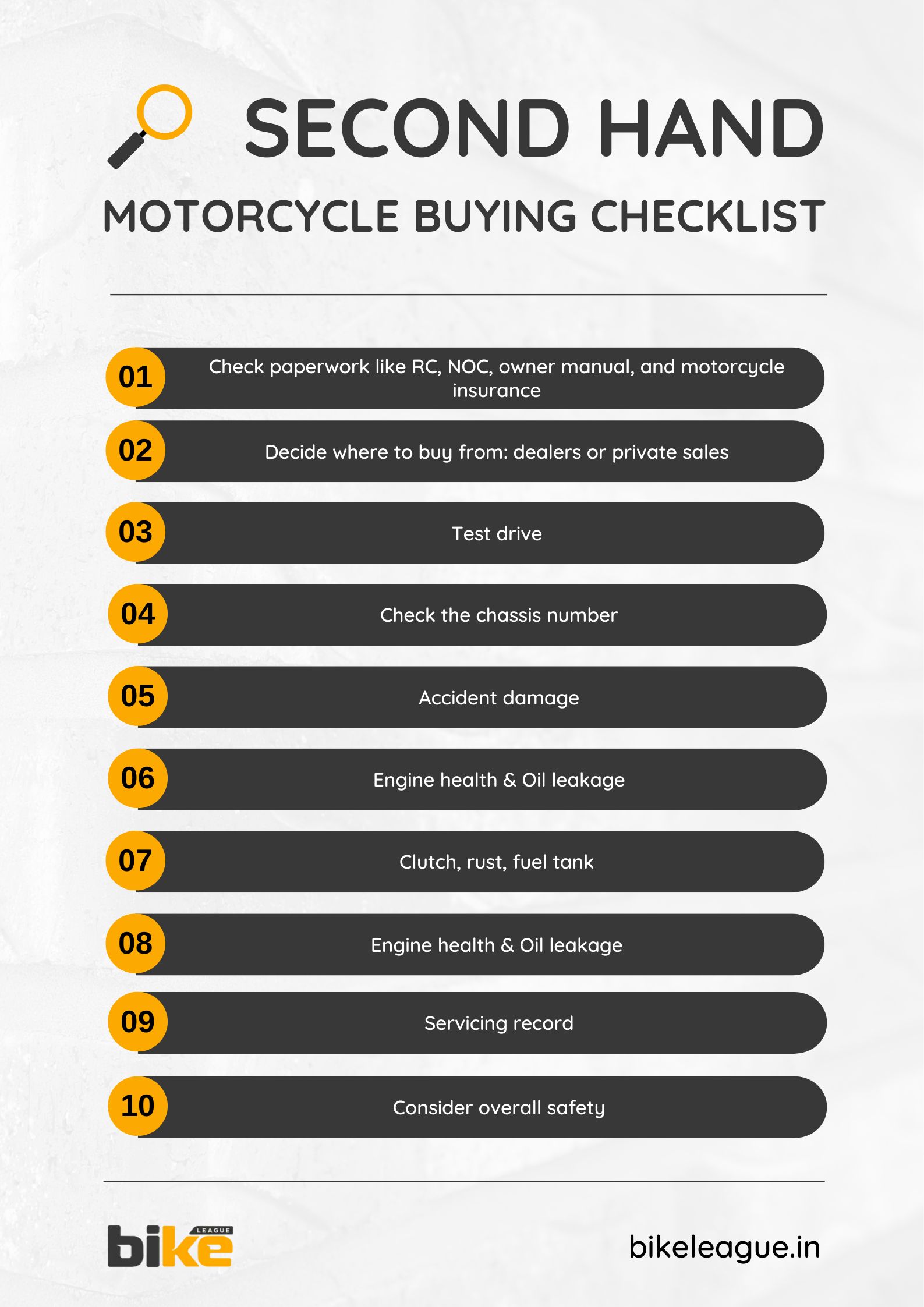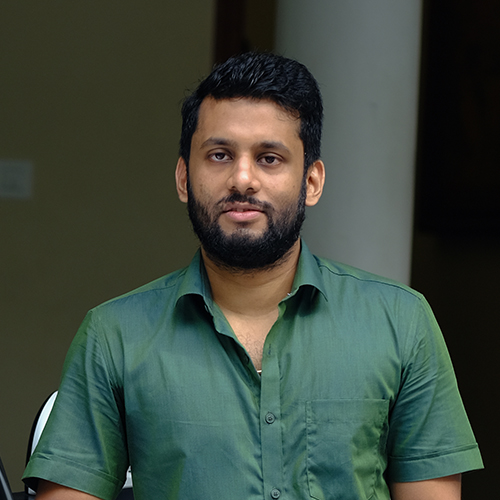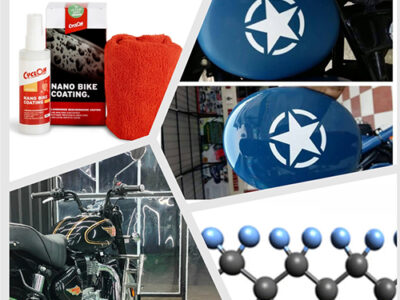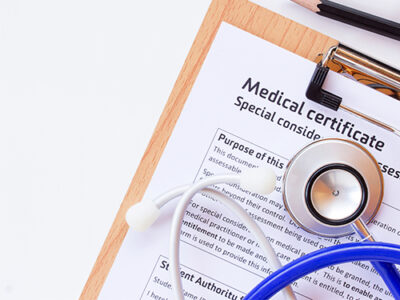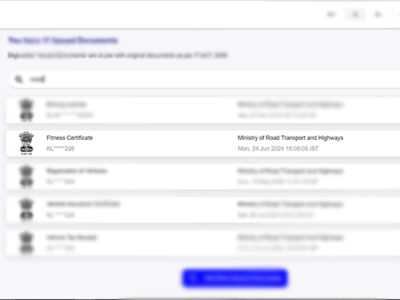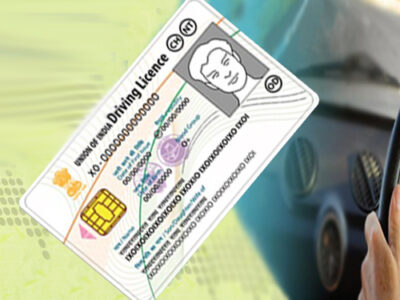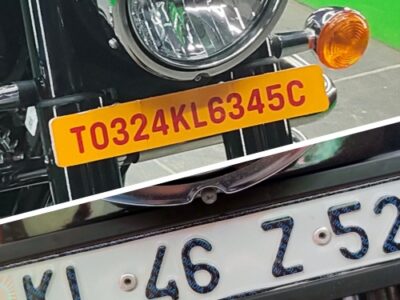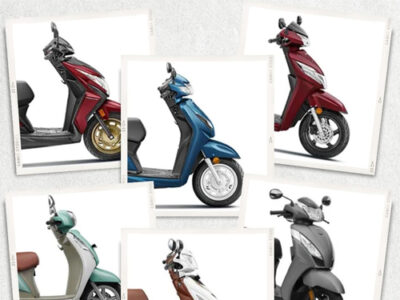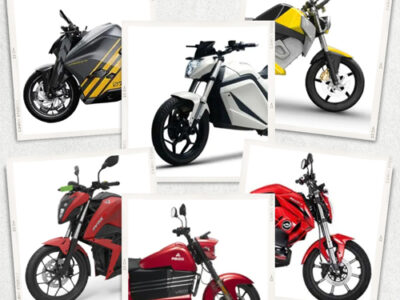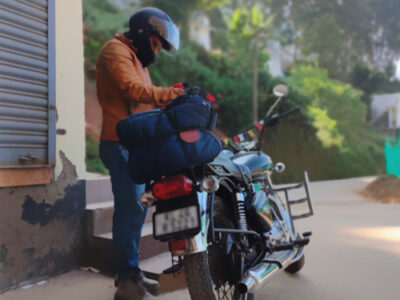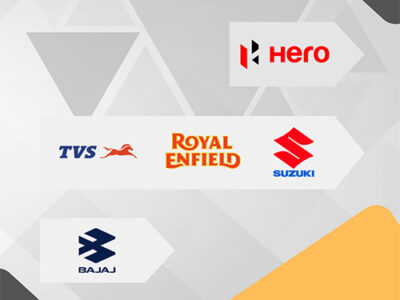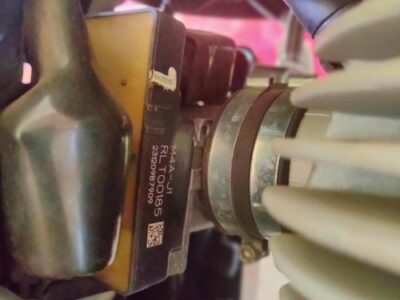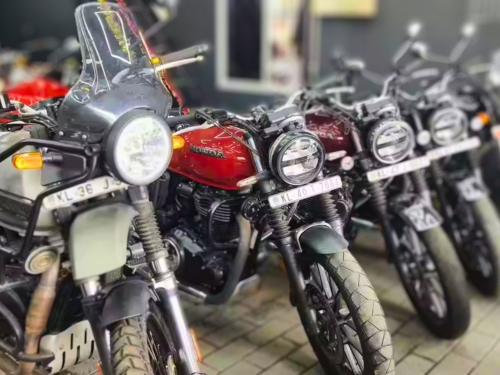
|
Getting your Trinity Audio player ready...
|
Long story short – if you are buying a second-hand motorcycle or bike, what do you have to watch? Make sure to check these things about the used bikes before purchase.
Whether a new motorcycle or a second-hand bike, the amount of love a biker has towards the motorcycle is the same. Owning a motorcycle for the first time is a special feeling. Some people need help to afford a brand-new motorcycle but should keep pursuing their dreams. Buying a second-hand motorcycle is a good option for those on a tight budget. When you decide to purchase a used bike, you can save significantly compared to buying a new one. Before you purchase a used bike, make sure to inspect the following things.
Key Takeaways
- Check for all sorts of red flags while buying second-hand motorcycle
- Check paperwork before buying a second-hand motorcycle
- Test drive before buying a second-hand motorcycle
- Check all previous service records of the motorcycle and odometer reading
- Check all sorts of mechanical and technical issues by a professional mechanic
1. Set a Budget for Buying a second-hand motorcycle
Before looking for a motorcycle, set a budget that includes the purchase price, maintenance, repairs, insurance, and other fees. This will help you narrow down your options and avoid overspending.
2. Conduct Thorough Research
Use the Internet to research various models and brands and their performance records. This will make purchasing your used bike easier. Read reviews, watch YouTube vlogs, and check out forums to gather as much information as possible.
3. Find the purpose for buying a second-hand motorcycle
Think about the purpose of buying a used bike. Purchasing a motorcycle is not the only expense; you must look after the maintenance, motorcycle insurance, fuel, etc. For example, do you need a motorcycle that can help you commute fuel-efficiently or a cruiser motorcycle that you can ride on long road trips?
4. Where to find second hand motorcycles
Dealers: If you buy from a reputed dealer, chances are that you will get a machine that has been thoroughly checked. Used bike dealers examine the whole motorcycle before buying any inventory. As he has to sell it down the line, he would have ensured the basic checks.
Private sales: Buying directly from a private seller will save you some money but involves a bit of risk. If you have experience or know the motorcycle owner, check and opt for this option for a good motorcycle at a good deal.
5. Test drive before buying a second-hand motorcycle
A second-hand bike might look impressive outside, but you must ride it to know how it feels. Test riding the second-hand bike will let you know the motorcycle’s total performance. Even a five-minute ride can tell you about the motorcycle’s health if you are well-versed in motorcycle mechanics. If you are a novice, you can get an experienced friend or a trusted mechanic to test-ride the motorcycle.
6. Check the chassis number before buying a second-hand motorcycle
After you are comfortable with the motorcycle you are about to purchase, take some time out to check its chassis number. The number on the plate and the engine should match. Locating this number on old motorcycles might be challenging, but a mechanic can find it easily. Check whether the chassis number is the same as the registration certificate.
7. Check motorcycle condition before buying a second-hand motorcycle
Suppose you’re looking to conduct a thorough inspection on the motorcycle for sale. In that case, there are a few essential items to pay attention to if you want to save a bit of money on service down the line.
1. Verify engine health before buying a second-hand motorcycle
- Make sure that the engine is completely cold.
- Start the engine and ignore any excessive ticking sounds.
- Check for exhaust smoke and any persistent ticking sounds once the motorcycle is heated to operating temperatures. If these symptoms arise, the engine may be due for a fuel system tune-up or a valve clearance and timing adjustment.
2. Clutch
Replacing a motorcycle clutch can be costly to repair. To check if a clutch is operating properly, ensure the cable has enough slack and is tightened correctly. Afterwards, get the motorcycle to operating temperature and take it for a drive. Cruise at about 40kph, bring the motorcycle to 4th or 5th gear, pull in the clutch, rev the motorcycle up, and abruptly release the clutch. The clutch should engage as soon as possible. If the clutch takes almost a second to return to running RPMs, the clutch may be due for a replacement.
3. Leaks
Inspect the engine and suspension components with a flashlight before buying a used bike. This could be a red flag if you see any heavy oil stains or fresh oil leaks. You could also use your finger to touch and inspect for oil leaks or stains around these components. Gasket and o-ring leaks, depending on location, can be costly to repair.
4. Accident damage
Another item to check would be any history of accident damage. This damage typically presents scratches at the handlebar levers, handlebar ends, side fairings, footpegs, and even the motorcycle gas tank. If you prefer to avoid buying a motorcycle with an accident history, inspect these telltale signs and decide accordingly.
5. Rust
Generally, small amounts of rust shouldn’t harm the motorcycle’s performance. However, rust on the motorcycle’s crucial areas could cause safety concerns in the long run. Check for rust on the motorcycle’s frame, frame welds, rear shock mounts, swing arm, fork clamps, and wheel hubs. Surface rust should be easy to fix; however, excessive rust can be a headache to deal with in the long run.
6. Oil leakage
Look for oil spillage around the engine. If the second-hand bike has been washed recently, the portion with the oil spillage will shine more than the rest of the area. Also, ask for the motorcycle’s service details.
7. Electricals and Battery
Check all lights and switches of the used bike to ensure everything works correctly before purchasing.
8. Fuel tank
Open the fuel tank and check for rust or corrosion. Don’t use a lighter or matchbox to see the fuel tank.
9. Suspension
Look for oil leaks around the suspension. Also, look for scratches/bends/twists in the leg.
10. Wheels
Check the wheels for cracks. The wheel should be examined for rust corrosion and cracks if it is spoke-based.
11. Servicing record
It will be ideal if the seller has a servicing record of the second-hand bike. That way, you will come to know how much maintenance work has gone into the motorcycle and how much more needs to be done. You can ask for an estimate if there is no written record.
8. Check paperwork before buying a second-hand motorcycle
1. RC (Registration Certificate) book
The engine and chassis number printed in the RC book should match the engine and chassis number embossed on the engine and chassis.
2. NOC (No Objection Certificate)
An NOC is necessary from the RTO where the vehicle is registered, especially if a vehicle registration is going to be transferred from one RTO to another.
3. Owner’s manual/ service book
This is not mandatory. However, an owner’s manual/service book would ensure that proper maintenance has been carried out periodically.
4. Motorcycle Insurance
If you buy a second-hand motorcycle, you must insure it. You can now purchase or renew two-wheeler insurance online easily. However, compare two-wheeler insurance before going for two-wheeler insurance online. You can save money and find an ideal policy when comparing motorcycle insurance online. Remember to renew the motorcycle insurance policy before its expiry date to keep it active.
5. Legal exchange of title/Registration
The motorcycle’s title or registration should be readily available and in your name if you buy it in person. Suppose the seller cannot provide either of these. In that case, you should ask for a steeper discount because that might mean they do not own the motorcycle, which entitles you to refuse the purchase. Get all the details of the buying process from the insurance company, and make sure to ask for retail pricing guides. Remember to ask for the owner’s manual, which most dealerships miss out on. A hot engine is a sure sign of excessive wear for the motorcycle.
Make sure to consider all these things before deciding whether or not you want to buy that specific motorcycle, especially if there is no price negotiation involved with your purchase.
9. Consider Overall Safety before buying a second-hand motorcycle
Always set a lower price if the motorcycle is in overall poor condition or there are signs of rust, corrosion, and other damage that may be dangerous for riding. It will always be preferable to find a second-hand bike in good overall condition because it might cost you more in the long run, especially when it comes to expensive repairs that need to be made. The best way to avoid that is by ensuring your motorcycle is safe before purchasing it- whether new or used.
10. Verify Seller’s Credibility before buying a second-hand motorcycle
Check the seller’s credibility, especially if you buy from a dealership. Ensure that the seller is legitimate and trustworthy.
What are some common red flags to look for when inspecting a second-hand motorcycle in India?
Physical and Structural Red Flags
1. Frame and Body Issues
- Look for bends, cracks, or suspicious welds on the frame which indicate the motorcycle has been involved in significant accidents
- Check for mismatched paint or fresh paint on certain parts, as these often suggest post-accident repairs
- Inspect for uneven panel gaps or misaligned wheels and handlebars, which could indicate crash damage
- Pay attention to non-original parts or parts from different models that don’t match the original specifications
2. Rust and Corrosion
- Examine critical components like welds and the chain for signs of rust, as these indicate neglect and potential structural weaknesses
- Look for corrosion, particularly in areas that are typically exposed to moisture
3. Mechanical Red Flags
1. Engine and Performance Issues
- Be suspicious if the seller preheats the bike before your inspection, as this might be masking starting issues or other engine problems
- Watch for oil leaks or damaged seals, which can indicate serious engine or transmission problems
- Check for white smoke from the exhaust, which could suggest engine problems or a clogged carburettor
2. Brand-Specific Issues
- For KTM motorcycles, be particularly vigilant about ABS malfunctions, fuel pump problems, and suspension issues
- With Royal Enfield bikes, pay special attention to oil leakages, which have been a historical problem
- For Benelli motorcycles, be aware of general reliability issues, particularly in models like the TRK502
3. Electrical System
- Look for signs of amateur wiring work, especially under the seat, as this can indicate tampering or poor repairs
- Check all electrical components, including lights, indicators, and dashboard functionality
4. Maintenance and Service Red Flags
1. Service History
- Be wary of motorcycles with neglected service periods, as this often leads to various mechanical issues
- Check for poor service quality indicators, particularly in certain brands where service quality has been rated as mid to poor
Tyre and Brake Condition
- Inspect tyres for cracks, damage, or uneven wear patterns
- Check brake components for wear, including brake pads and fluid levels
- Look for uneven wear on tyres or brake pads, which might suggest improper repairs or alignment issues
5. Documentation and Authenticity Red Flags
1. Odometer and VIN
- Check for signs of odometer tampering, which is a common fraudulent practice
- Verify that the Vehicle Identification Number (VIN) is intact and hasn’t been tampered with
2. Online Purchase Concerns
- Be cautious of online listings that seem too good to be true, as internet-based frauds are significant in India
- Watch out for sellers requesting cryptocurrency payments, as these transactions are harder to trace in case of fraud
3. Professional Inspection
- It’s highly recommended to have an independent mechanic inspect the motorcycle before purchase
- The mechanic can provide an unbiased assessment and identify hidden issues that might not be immediately apparent
What documents should I request from the seller to ensure the second-hand motorcycle’s legitimacy in India?
1. Primary Documentation
1. Registration Certificate (RC)
This is the most crucial document that proves legal ownership and registration of the motorcycle. The RC should:
- Match the seller’s identity
- Show complete ownership history
- Be in its original form, not a photocopy
- Be issued by the Regional Transport Office (RTO)
2. Insurance Policy
A valid insurance certificate is mandatory for all motorcycles. Verify:
- Current validity
- Policy number
- Vehicle details matching with RC
- Insurance provider’s authenticity
3. Pollution Under Control (PUC) Certificate
This document certifies that the vehicle meets the required emission standards. Check:
- Validity period
- Testing center authenticity
- Emission test results
2. Additional Required Documentation
- No Objection Certificate (NOC): If the motorcycle is registered in a different state, request an NOC from the original RTO
- Form 29: Notice of transfer of ownership
- Form 30: Report of transfer of ownership
- Proof of Sale: Request a formal sales receipt or agreement documenting the transaction
3. Verification Steps to Ensure legitimacy
1. Document Authentication
- Verify all documents with respective issuing authorities
- Cross-check vehicle details across all documents to ensure consistency
- Ensure there are no pending loans or legal issues attached to the vehicle
2. Physical Verification
Based on common fraud cases in India, perform these checks:
- Inspect the motorcycle physically for signs of tampering or damage
- Consider hiring a professional mechanic for detailed inspection
- Verify the chassis number and engine number match the RC details
3. Seller Verification
To prevent fraud:
- Confirm seller’s identity with government-issued ID
- Match seller’s name with RC documentation
- Verify seller’s address proof
- Use secure and traceable payment methods
4. State-Specific Requirements
Be aware that different states may have additional requirements:
- Check for state-specific tax implications
- Verify if any additional permits are needed
- Confirm if there are any state-specific emission standards
4. Recent Regulatory Considerations
Due to recent changes by the Ministry of Road Transport and Highways:
- Be aware of stricter penalties for traffic violations
- Check if the vehicle complies with new emission regulations
- Verify if any additional environmental compliance certificates are required
FAQ about buying a second-hand motorcycle in India
1. What should I consider before buying a second-hand motorcycle?
Before purchasing a used bike, consider your purpose, such as daily commuting, long rides, or occasional use. This will help you choose the type of motorcycle that suits your needs.
2. How important is it to set a budget?
Budgeting is crucial as it helps narrow your options and ensures you don’t overspend. Include the purchase price, potential maintenance costs, insurance, and other fees in your budget.
3. What documents should I check before buying?
Ensure all necessary documents are in order, including the registration certificate, insurance papers, pollution under control certificate, RTO forms, and sales receipt. This is essential to avoid any legal issues later.
4. How can I verify the bike’s condition?
Conduct a thorough inspection of the used bike for any signs of damage, wear and tear, and ensure that key components like brakes, clutch, chain, sprocket, electrical system, exhaust, frame, tyres, and wheels are in good condition before purchasing.
5. Is a test ride necessary?
A test ride is crucial to judging the bike’s condition and performance. During the test ride, pay attention to how the bike handles and the condition of the brakes, clutch, and other controls.
6. Why is it important to check the maintenance records?
The maintenance records show how well the bike has been maintained and if it has had any major repairs. This can help you assess the bike’s reliability and future maintenance needs.
7. How do I ensure the bike is not stolen?
Verify the chassis and engine numbers on the bike and ensure they match the registration certificate. Any discrepancies could indicate that the bike is stolen.
8. Can I negotiate the price?
Yes, you can negotiate the price based on the bike’s condition, mileage, and market value. Use your research and inspection findings to justify your offer.
9. What should I know about transferring ownership and insurance?
Apply for the transfer of ownership at the same RTO where the bike was previously registered. Ensure the used bike insurance is transferred to your name, or purchase a new policy if required.
10. What are the benefits of buying a second-hand motorcycle?
Second-hand motorcycles are generally more affordable, depreciate less quickly, and often come with accessories added by the previous owner. Additionally, buying a used bike can be more environmentally friendly as it extends the life of existing motorcycles.
Other related articles from Bikeleague India
- How to properly maintain your motorcycle fuel tank
- Motorcycle RC book in India: Exploring Book vs Digital
- Two-wheeler insurance in India – How to buy and select
- Tips to reduce your bike insurance premium in India
- Must have bike documents for travel in India
Conclusion
A second-hand bike is a good deal when saving significant money. Take your time to decide which motorcycle you want, as an option available will always exist.
While buying used bike things, you should look after
- Decide where to buy from dealers or private sales
- Test drive
- Check the chassis number
- Check the used bike’s condition, like engine health, clutch, leaks, accident damage, rust, oil leakage, electricals & battery, fuel tank, suspension, wheels, and servicing record before purchasing.
- Check paperwork like RC, NOC, owners manual, motorcycle insurance
- Consider overall safety
Check all the papers like RC, NOC, and owner’s manual. And check the overall safety of the motorcycle. Once everything is green, race ahead and enjoy riding a motorcycle.
Be vigilant when buying a used bike; thoroughly research. In addition to all the checks mentioned above, ensure you have all the documentation necessary for the transfer of ownership of the motorcycle.
If you have any other doubts or queries, email us at bikeleague2017@gmail.com. We are always eager to help and assist you. Also, here are several social media platforms of Bikeleague India to raise your suspicions.

